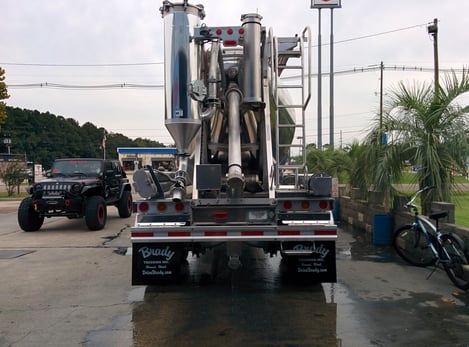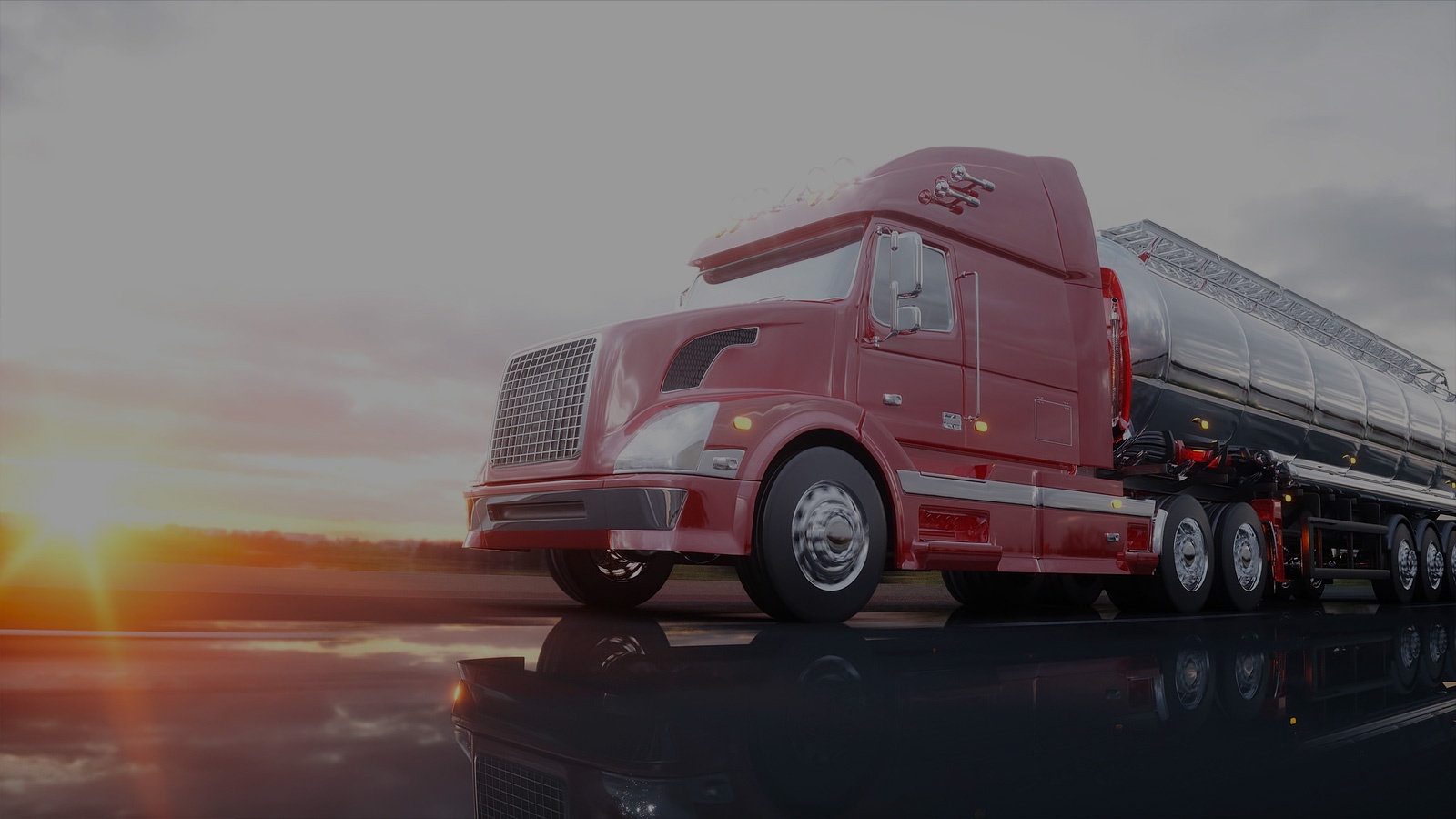In our previous blog post, we introduced our new Dry Bulk Freight 101eBook with a look at dry bulk equipment. In this article, we’ll look at what’s included in the second part of that eBook – the processes involved in dry bulk trucking.
The loading process
 Loading sand, clay and many other materials into a dry bulk trailer is a relatively simple process. The driver pulls the truck under a chute attached to a silo, and gravity does most of the work as the material drops through the manhole. The process moves from one manhole to the next, to fill the trailer evenly.
Loading sand, clay and many other materials into a dry bulk trailer is a relatively simple process. The driver pulls the truck under a chute attached to a silo, and gravity does most of the work as the material drops through the manhole. The process moves from one manhole to the next, to fill the trailer evenly.
Loading plastic pellets or powder from a rail car is trickier, however, as it involves the use of air pressure to move product through the hose and into the trailer. It takes a skilled worker to pressurize the trailer in just the right way and then gently adjust the air to get the product moving.
Usually, the shipper assigns an employee to take charge of loading. But, before anyone starts that process, you need to inspect the trailer carefully to make sure it’s clean, dry and odor free. You can ask the carrier for a wash slip to confirm that the trailer has been cleaned correctly. Additionally, the seals on the manholes and the valves on the hoppers must be checked to make sure they’re closed tightly so that no product can leak out.
The unloading process
Unloading is generally a driver’s job. Every piece of equipment is different, and the driver is the expert on how his equipment behaves.
When the driver arrives at a plant or other receiving site with a load, his first stop is the office. He shows his paperwork and confirms that the product on the truck is the same product the company expected. If the driver is offloading into a silo, he will then verify the correct silo with the receiving site personnel. A smart driver will get an authorized person to sign a form attesting to that fact, to make sure he’s held harmless in case of a mistake.
Download the new Dry Bulk Freight 101 eBook from Bulk Connection
To begin the unloading, the driver brings the truck as close as possible to the silo. If proper planning has occurred, the driver will have enough 20-foot lengths of hose to connect the trailer to the tank.
Finally, it’s time to start the vacuum or blower, carefully adjusting the pressure to get the product flowing smoothly through the hose. That hose connects to a pipe that leads into the silo, sometimes by a long route that includes the occasional elbow.
Offloading usually takes about an hour to an hour-and-a-half, depending on the product. An inexperienced driver might take longer, especially if he turns the pressure up too high and must stop the operation to unclog the hose or pipes.
The tank washing process
One of the biggest differences between dry van and dry bulk trucking is the need to wash the dry bulk trailer. After dropping a load, the bulk driver might have to travel an hour or more—maybe even to another state—to find a certified tank wash station.
This requirement adds extra time to every shipment. It also adds cost, partly because every shipment includes deadhead miles, and partly because the shipper pays for the wash.
For many products, the tank wash just needs to blast the inside of the trailer with water at high pressure. It does this by dropping a spinning device—something like a disco ball with water jets all around—into each of the manholes. After the wash, the trailer is blown dry.
If the driver has just dropped a load of sand or clay and is preparing to pick up a similar load, it’s often fine to skip the certified wash and visit a local business that washes down the tank with a high-pressure hose.
But when a truck drops one commodity and picks up a different one—especially when moving plastics—it must go to a certified wash station and receive a “conversion wash.” In that process, employees at the tank wash take off the pipe that runs along the bottom of the trailer, remove all its fittings, lay everything on the ground and give it a careful cleaning.
Bulk Connection: dry bulk trucking experts
When it comes to dry bulk shipping, it’s always a good idea to have an expert in your corner to go through its checklist and make sure every aspect of your dry bulk trucking operation is geared for safety and success. With over 30 years of experience, Bulk Connection is such an expert. We specialize in matching shipper loads with carrier capacity and asking the right questions of each party to obtain the necessary information. To learn how Bulk Connection can ensure the quality transport of your loads, contact us today.




